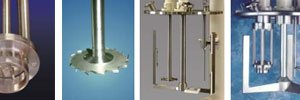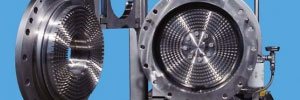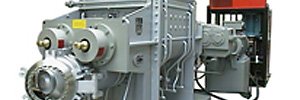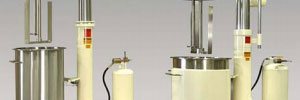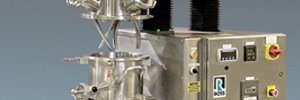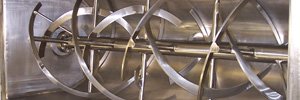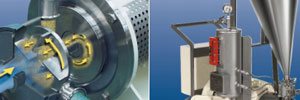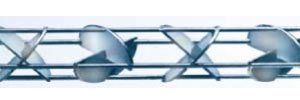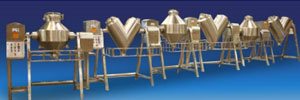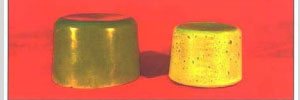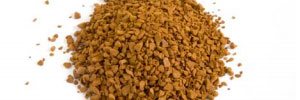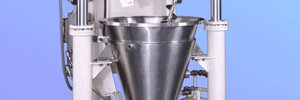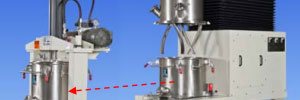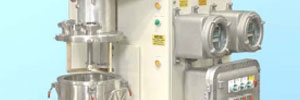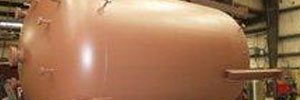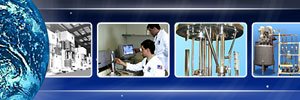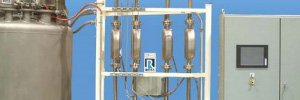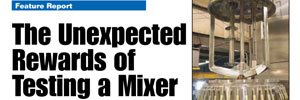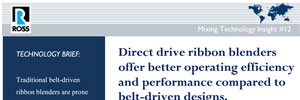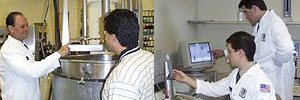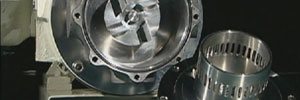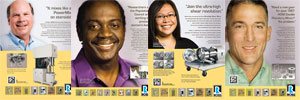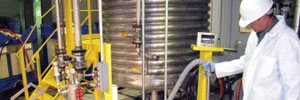Mixing Technology Insights
Mixing Technology Insights offer a brief look into ROSS' products, process expertise and market strengths. The reports delve into how the equipment can be used to improve your process and to add to your bottom line. ROSS strives to provide its customers with up to date information covering new technology in the industrial mixing and blending industry.
Select a specific product, process or market to view a list of related Insights:
Select Product
Select Process
Select Industry
- Recommended Mixing Equipment for Sunscreen and Sun Tan Lotions
Mixing is a critical step in the production of sunscreen, largely because proper dispersion of the active ingredients and additives directly impacts the end product’s efficacy and stability. - Recommended Blending Equipment for Cosmetic Powders
Thorough mixing in a well-designed Ribbon Blender is an effective method for preparing face powders, eye shadows, pressed make-up, foundations, blushes, bronzers and other cosmetics supplied in powder form. - Recommended Blending Equipment for Scented Powders
Blending fragrance into powders is a common operation in the manufacture of cosmetics, personal care and home products. - Recommended Mixing Equipment for Body Washes and Shower Gels
This bulletin discusses the benefits of high-speed, high-shear powder injection in the manufacture of body washes, shower gels, liquid hand soaps, facial cleansers and other similar personal care products. - Recommended Mixing Equipment for Solid Dispersions in Wax
Dispersing solids into molten wax is a common operation encountered in the manufacture of various products, from cosmetics, coatings and crayons to hot-melt adhesives, investment castings and thermal imaging inks. - Recommended Mixing Equipment for Toothpaste
Different types of mixing equipment are utilized in the various stages of toothpaste production. Proper mixing at every step is necessary to achieve lot-to-lot consistency and ensure that each ingredient fully imparts its intended functionality. Viscosity, yield value, thixotropy, density, purity, taste, stability and appearance of the final gel or paste are characteristics directly affected by mixing. - Recommended Mixing Equipment for Cosmetic Emulsions
The most commonly used carrier systems of cosmetic ingredients, emulsions impart the desired consistency and texture to lotions, creams, make-up, hair conditioners and other products. - New technologies for continuous mixing and homogenization of
nano-filled materials
Inline ultra-high shear rotor/stator mixers are high-throughput low maintenance devices capable of producing dispersions in the submicron and nano range. They offer a more efficient and cost-effective way of dispersing nanoparticles compared to conventional rotor/stator mixers, colloid mills and high pressure homogenizers. - Buying reconditioned mixing
equipment
When properly restored to perfect working condition, ideally by the OEM, a reconditioned mixer or blender is comparable, if not equal, in efficiency to new equipment. The savings in cost and faster shipment help you get to the profitable stage sooner without sacrificing reliability. - Dust-free mixing of pigments
into liquid
A common issue in dispersing pigments into liquid is dust generation. Charging solids into an open, top-agitated vessel inherently causes lightweight powders to become airborne. Using a high shear mixer equipped for sub-surface powder induction helps minimize dusting, maximize yield, improve dispersion quality and accelerate production. - Select a powder induction mixer that can serve multiple mix tanks of virtually any size.
An inline rotor/stator mixer equipped for powder induction offers flexibility, capability and portability to serve multiple mix vessels of virtually any size. Its straightforward operation and convenience further maximize equipment utility while simplifying material handling. - Improve emulsion stability through ultra-high shear mixing.
The droplet size distribution of an emulsion largely dictates its stability. Fine droplet sizes are produced by applying sufficient shear, often through the use of conventional rotor/stator mixers. Today, ultra-high shear rotor/stator designs are available which can improve emulsion stability of certain formulations. - Eliminate “fish eyes” in your mix.
Inefficient mixing can lead to agglomerates and “fish eyes” which are difficult to disperse once formed. Using a high shear mixer equipped for powder induction helps prevent the formation of agglomerates, maximizes yield and cuts cycle time. - Consider the advantages and disadvantages of scrapers.
Consider the advantages and disadvantages of scrapers.
The use of scrapers in batch mixing operations helps improve product homogeneity and heat transfer efficiency. However, there are cases wherein scrapers are not recommended such as in the processing of abrasive applications or highly viscous, sticky materials. - Use of powder induction mixing technology can significantly reduce raw material costs.
An efficient mixing system with powder induction capability enables manufacturers to optimize raw material costs in two ways: by allowing them to source and handle ingredients in dry form rather than the more expensive liquid form; and by maximizing yield of all powder components. - Inline high shear mixers instantly boost batch production without disturbing existing equipment.
Many batch mixing processes can be optimized with the addition of an inline rotor/stator mixer. The supplemental agitation and shear provided by an inline mixer boosts production by reducing cycle time. Multiple batch tanks can be serviced by a single inline mixer and benefit from its pumping capabilities. Another practical advantage to an inline mixer is that it is easily installed without disturbing pre-existing equipment.

